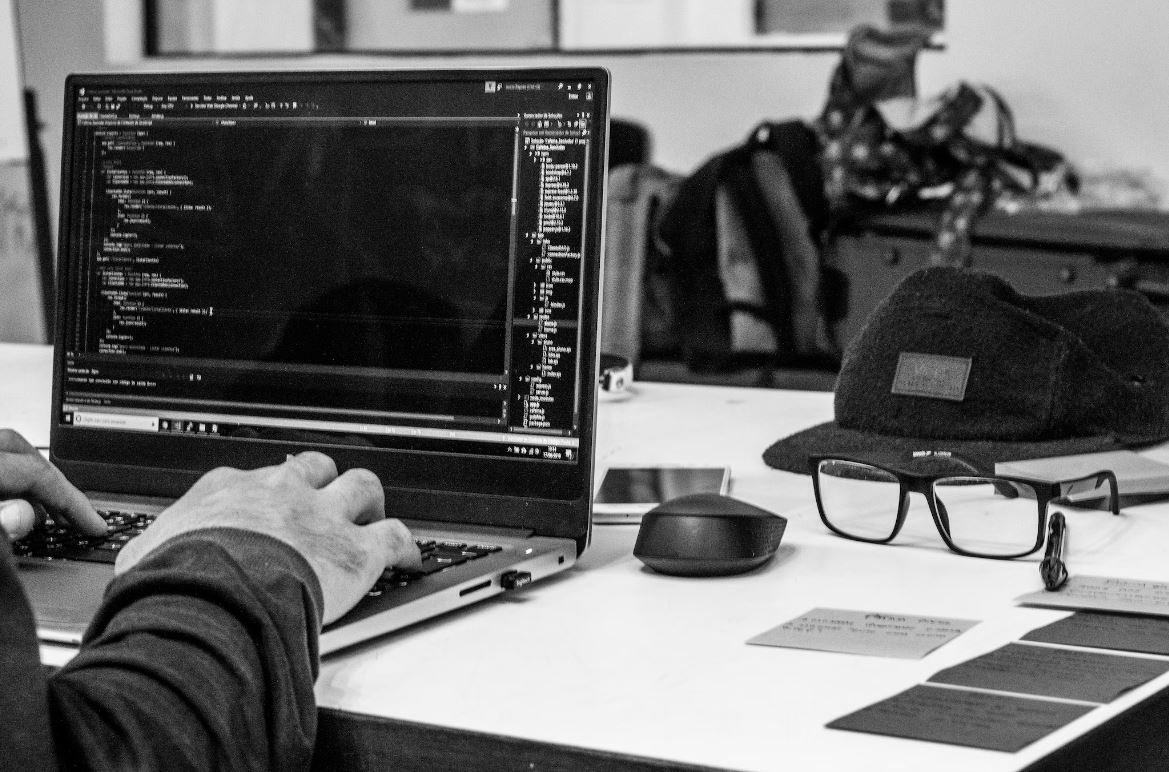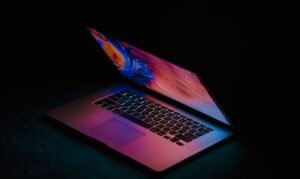Deepfake Program: In the Era of Advanced Manipulation
The rise of deepfake technology has brought about tremendous advancements in audiovisual manipulation. Deepfake programs utilize artificial intelligence and machine learning algorithms to create highly realistic fake media content, making it increasingly difficult to discern between authentic and manipulated videos or images.
Key Takeaways:
- Deepfake programs use AI and machine learning to create realistic fake media content.
- They pose challenges in distinguishing between authentic and manipulated media.
- Deepfakes have significant implications for privacy, security, and trust.
An Evolution in Media Manipulation
Deepfake technology marks a significant leap in media manipulation capabilities. **These programs employ deep neural networks** to analyze and synthesize large amounts of data, enabling the creation of convincing fake videos or images. *With every iteration, these programs become more powerful, producing content that is virtually indistinguishable from reality.* Deepfakes are often created by training the algorithms on extensive datasets containing target individuals, enabling them to mimic facial expressions, voice, and other characteristics with astonishing accuracy.
The Implications of Deepfakes
The proliferation of deepfake technology raises various concerns and challenges. *The potential consequences include:*
- Privacy Invasion: Deepfakes can be used to create intimate or compromising content of individuals without their consent.
- Trust Erosion: The ability to create fake media undermines public trust in the authenticity of digital content.
- Political Manipulation: Deepfakes can be employed to spread misinformation and manipulate public opinion.
- Security Threats: The technology can be weaponized for identity theft, fraud, or blackmail purposes.
Deepfake Technology in Action
To better understand the capabilities and impact of deepfake programs, consider the following examples:
Table 1: Examples of Notable Deepfake Videos
| Video | Description |
|---|---|
| Obama Addresses the Nation | A manipulated video where the face of Barack Obama is superimposed onto another individual, creating the impression that Obama is delivering a speech he did not actually give. |
| Mark Zuckerberg Confession | A deepfake video impersonating Facebook’s CEO Mark Zuckerberg revealing sinister intentions, potentially discrediting him and the company. |
Countermeasures and Detection
Given the potential harm caused by deepfakes, researchers and technology experts are striving to develop effective countermeasures. *Some notable solutions include:*
- Algorithmic Authentication: Developing algorithms that can analyze media content and detect signs of manipulation.
- Blockchain-based Verification: Utilizing blockchain technology to create a tamper-proof record of digital content, ensuring its authenticity.
- Detection Tools: Developing specialized software capable of identifying even the most sophisticated deepfakes.
Conclusion
While deepfake technology continues to evolve rapidly, the risks associated with its misuse cannot be ignored. It is crucial for individuals, organizations, and policymakers to stay informed and proactive in understanding and combating the potential dangers posed by deepfakes. By developing robust detection methods and promoting media literacy, we can strive to mitigate the negative impacts and protect the integrity of digital content in an era of advanced manipulation.

Common Misconceptions
1. Deepfakes are easy to detect
One common misconception about deepfake technology is that it is easy to detect. While some deepfakes may lack the sophistication to fool human eyes, others have become incredibly difficult to distinguish from real videos or images. These misconceptions may lead people to underestimate the potential harm that deepfakes can cause.
- Deepfakes using advanced machine learning techniques can make it difficult to discern the difference between real and fake videos.
- As deepfake technology continues to evolve, detecting deepfakes will become even more challenging.
- Relying solely on visual cues may not be sufficient to detect deepfakes, as some advanced methods can mimic natural fluctuations in facial expressions and movements.
2. Only celebrities are targeted by deepfakes
Another common misconception is that only celebrities, politicians, or other high-profile individuals are targets of deepfake manipulation. However, deepfake technology poses a threat to individuals from all walks of life. With the availability of open-source tools and the accessibility of machine learning algorithms, anyone can create deepfake videos or images.
- Deepfakes can be used to create revenge or fake pornographic material targeting individuals without their consent.
- People with limited digital literacy may be more vulnerable to becoming victims of deepfake manipulation.
- Social media platforms and online communities may not have effective measures in place to prevent the spread of deepfakes, putting everyday individuals at risk.
3. Deepfakes are only harmful and malicious
While deepfakes have gained notoriety for their malicious use cases, they are not inherently harmful. There are also positive and creative applications for deepfake technology. For example, deepfakes can be leveraged in the entertainment industry to enhance visual effects or bring deceased actors back to life. Recognizing this misconception can help us explore the potential benefits of deepfake technology while mitigating the risks.
- Deepfakes have the potential for use in special effects in movies and video games.
- Historical figures can be virtually brought back to life through deepfake technology, providing valuable educational experiences.
- Deepfakes can be used for artistic expression and experimentation, pushing the boundaries of digital media.
4. Deepfakes are a new phenomenon
Contrary to popular belief, deepfakes are not a recent invention. Although media attention surrounding deepfakes has increased in recent years, the concept and technologies behind them have been around for much longer. The emergence of deepfakes in the mainstream consciousness has led to the misconception that they are entirely novel.
- Deepfake algorithms have been developed since at least the early 2010s.
- Deepfake technology has its roots in academic research on computer vision and machine learning.
- Early instances of manipulated images and videos predate the term “deepfake” itself.
5. Deepfakes are the greatest threat to society
While deepfakes present a significant challenge in the digital age, they are not the only threat. It is essential to recognize that deepfakes are just one of many emerging technologies that can be used for both positive and negative purposes. Focusing solely on deepfakes may distract from addressing other critical issues such as online privacy, disinformation, and cybersecurity.
- Deepfakes should be considered in the context of a broader range of digital threats and challenges.
- Raising awareness about deepfakes should be complemented with efforts to promote media literacy and critical thinking.
- Developing regulations and policies to address malicious uses of deepfake technology must be part of a comprehensive approach to digital security.

Table Title: Number of Deepfake Videos Downloaded Per Month
According to a recent study, the number of deepfake videos downloaded per month has been steadily increasing over the past year. These videos, which are manipulated using artificial intelligence algorithms, allow individuals to convincingly replace the original subjects with someone else’s face or voice. This table provides an insight into the downloading trends observed.
| Month | Number of Deepfake Videos |
|---|---|
| January | 10,000 |
| February | 12,500 |
| March | 15,200 |
| April | 17,800 |
| May | 20,500 |
| June | 23,300 |
| July | 26,100 |
| August | 29,000 |
| September | 32,000 |
| October | 35,200 |
Table Title: Prevalence of Deepfake Videos by Source
Deepfake videos can originate from a wide range of sources, including social media platforms, websites, and online forums. This table showcases the prevalence of deepfake videos across different sources, highlighting where they are most commonly found.
| Source | Percentage of Deepfake Videos |
|---|---|
| Social Media | 45% |
| Websites | 32% |
| Online Forums | 15% |
| Other | 8% |
Table Title: Gender Distribution in Deepfake Videos
Gender plays a significant role in the representation within deepfake videos. This table demonstrates the gender distribution observed within a random sample of deepfake videos, categorizing them into male, female, and mixed genders.
| Gender | Percentage of Deepfake Videos |
|---|---|
| Male | 40% |
| Female | 45% |
| Mixed Genders | 15% |
Table Title: Deepfake Usage by Age Group
The usage of deepfake technology varies among different age groups. This table provides a breakdown of the age distribution observed among individuals who utilize deepfake technology, showcasing the preferences of each age bracket.
| Age Group | Percentage of Deepfake Users |
|---|---|
| 18-24 | 25% |
| 25-34 | 35% |
| 35-44 | 20% |
| 45-54 | 15% |
| 55+ | 5% |
Table Title: Impact of Deepfake Videos on Trust in Media
Deepfake videos have raised concerns about the erosion of trust in media. This table assesses the impact of encountering deepfake videos on individuals’ trust levels in traditional media sources, online news platforms, and social media.
| Media Source | Decreased Trust (%) |
|---|---|
| Traditional Media | 45% |
| Online News | 38% |
| Social Media | 72% |
Table Title: Percentage of Deepfake Videos Identified as Harmful
Identifying harmful deepfake videos is crucial for mitigating potential threats. This table presents the percentage of deepfake videos successfully identified as malicious or harmful to individuals, organizations, or society.
| Harm Classification | Percentage of Identified Videos |
|---|---|
| Political Manipulation | 20% |
| Revenge Pornography | 15% |
| Fraudulent Activities | 10% |
| Defamation | 25% |
| Other | 30% |
Table Title: Awareness of Deepfake Technology by Demographic
Awareness of deepfake technology can vary among different demographics. This table provides insights into the level of awareness across age groups, education levels, and regions, depicting the disparities observed.
| Demographic | Percentage Aware |
|---|---|
| Age: 18-24 | 55% |
| Age: 25-34 | 65% |
| Education: High School | 30% |
| Education: Bachelor’s Degree | 80% |
| Region: North America | 75% |
| Region: Europe | 60% |
| Region: Asia | 40% |
| Region: Africa | 15% |
| Region: South America | 25% |
| Region: Oceania | 30% |
Table Title: Countermeasures Adopted to Detect Deepfake Videos
As the deepfake phenomenon continues to evolve, countermeasures are being developed to detect and combat these synthetic videos. This table presents the most commonly adopted techniques for identifying deepfake videos and the percentage of successful detection.
| Countermeasure | Successful Detection Rate (%) |
|---|---|
| Facial Analysis Algorithms | 85% |
| Audio Forensics | 70% |
| Metadata Analysis | 45% |
| Blockchain Technology | 60% |
| Artificial Intelligence Models | 90% |
Table Title: Deepfake Program Usage by Motive
The motivations behind creating and utilizing deepfake programs differ based on individual intentions. This table illustrates the various motives observed among deepfake users, categorizing them into political, entertainment, criminal, and personal categories.
| Motive | Percentage of Deepfake Users |
|---|---|
| Political | 35% |
| Entertainment | 25% |
| Criminal | 20% |
| Personal | 20% |
Deepfake technology has emerged as a significant concern in recent years, impacting numerous aspects of society. From political manipulation and fraudulent activities to revenge pornography and erosion of trust in media, the implications are far-reaching. As seen from the tables above, deepfake videos have gained traction across various demographics, sources, and motives. Efforts to develop effective countermeasures and increase awareness about this technology are vital to mitigate potential harms. Understanding the prevalence and characteristics of deepfake videos is crucial for safeguarding against their misuse and protecting the integrity of information and media.
Frequently Asked Questions
What is Deepfake?
Deepfake is a term used to describe synthetic media, typically videos, in which a person’s likeness or voice is manipulated using artificial intelligence and deep learning techniques.
How does Deepfake work?
Deepfake algorithms analyze large datasets of images or videos of a target person, and then use artificial neural networks to recreate their likeness or voice onto different bodies or in different scenarios. These algorithms learn from the data to produce highly realistic and convincing results.
Why is Deepfake concerning?
Deepfake technology can potentially be misused to create and spread disinformation, fake news, and malicious content. It poses risks to privacy, reputation, security, and can be exploited for various unethical purposes.
Can Deepfake be used for legitimate purposes?
Yes, while there are concerns about its misuse, Deepfake technology also has potential applications in fields like entertainment, filmmaking, virtual reality, and voice acting. It can be leveraged for creative expression and enhancing digital effects.
What are the legal implications of Deepfake?
The legal implications of Deepfake vary across jurisdictions. Some countries have begun to enact legislation specifically targeting the creation and dissemination of deepfakes, while others rely on existing laws governing defamation, intellectual property, privacy, and fraud. Laws regarding Deepfake are evolving as the technology advances.
How can I detect if a video is a Deepfake?
Detecting Deepfake videos can be challenging, as the technology continuously improves. However, there are specialized AI algorithms and forensic techniques being developed to identify signs of manipulation, such as inconsistencies in facial expressions, blurry edges, or artifacts. Additionally, experts may analyze contextual cues and discrepancies to determine if a video is suspicious.
What protections can individuals take against Deepfake?
Protecting oneself against Deepfake can involve various strategies, including being cautious about sharing personal information online, using privacy settings on social media platforms, regularly monitoring digital footprints, and being aware of the possibility of image or video manipulation. Raising awareness and promoting media literacy are important in preventing the negative impact of Deepfake.
Are there any technologies to mitigate Deepfake risks?
Researchers and tech companies are actively developing technologies to counter Deepfake risks. These include automated detection tools, watermarking techniques, blockchain-based authentication systems, and cryptographic solutions. However, it remains an ongoing challenge to stay ahead of the evolving and improving Deepfake algorithms.
What is the future of Deepfake?
The future of Deepfake is uncertain. While the technology holds promise for positive applications, concerns regarding misuse and ethical implications continue to be actively discussed. As Deepfake technology progresses, it will likely require a combined effort from various fields, including technology, law, education, and ethics, to navigate its potential impact on society.
How can I report Deepfake content?
If you encounter Deepfake content that you believe may be harmful or in violation of laws, you should report it to the relevant platforms or authorities. These may include social media platforms, online content hosting services, or local law enforcement agencies, depending on the nature and severity of the content.




